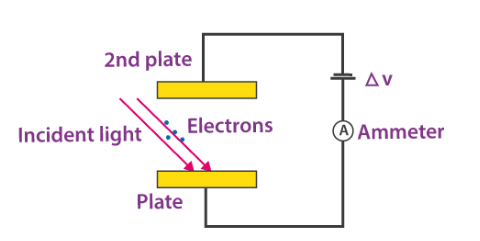OUTLINE:
How Does Light Sensor Work: Working, Function and Application
 155
155If there is a world shrouded in perpetual darkness, where streetlights never flicker on and our smartphones remain stubbornly dim. Light sensors play a crucial role in banishing this perpetual gloom, but have you ever stopped to wonder how does the light sensor work? In this article, we will explore the science behind how does light sensor work, their applications, and where they are commonly found.

What is a Light Sensor
Light sensors, also known as photodetectors or photoresistors, are electronic devices that detect and measure light levels in their surroundings.
The intensity of light affects the number of electrons emitted, resulting in a corresponding change in the electrical signal produced by the light sensor. It utilizes the photoelectric effect, which is the emission of electrons when certain materials are exposed to light.
They play a crucial role in various applications, from adjusting screen brightness on smartphones to controlling streetlights based on ambient light conditions.
How Does Light Sensor Work
Light sensors work in a variety of ways, but the most common relies on a phenomenon known as the photoelectric effect.
For example, photodiodes, work by converting incident light energy into an electrical signal. The process starts with a semiconductor material, usually silicon, which produces a p-n junction. When light strikes the photodiode, photons interact with the semiconductor material, resulting in electron-hole pairs. The electric field generated by the p-n junction separates these charge carriers, resulting in photocurrent. The magnitude of the photocurrent is directly proportional to the intensity of the incident light.
Simply speaking, When light strikes the sensitive surface of the sensor (which is typically made of semiconductors such as silicon), it knocks electrons loose from their atoms. This electron flow produces a current, which can be measured and interpreted as a change in light intensity.

Where is the Sensor on a Light
The placement of light sensors depends on the specific application. In devices like smartphones or tablets, light sensors are often located near the front-facing camera or display to measure the ambient light levels and adjust the screen brightness accordingly. In automatic lighting systems, light sensors are typically positioned on outdoor fixtures or integrated into the circuitry of indoor light switches to detect changes in ambient light and trigger the appropriate response.
Light Sensor Applications
Light sensors find applications in various fields, including:
Automatic Lighting Systems: Light sensors enable automatic control of lighting systems, adjusting brightness levels based on natural light conditions.

Photography: Light sensors in cameras help determine the optimal exposure settings by measuring the available light.

Environmental Monitoring: Light sensors are used in weather stations and environmental monitoring equipment to measure light levels for research and analysis.
Display Technologies: Light sensors in smartphones and tablets assist in adaptive brightness control, ensuring optimal viewing experiences.

Energy Conservation: Light sensors contribute to energy-efficient practices by controlling outdoor lighting based on daylight availability.

Sum Up
In summary, light sensors operate based on the photoelectric effect, converting light into an electrical signal. These sensors play a vital role in various applications, from adjusting screen brightness to controlling lighting systems. Understanding how does light sensor work helps us appreciate the technology behind light detection and its impact on our daily lives.

Disclaimer: The views and opinions expressed by individual authors or forum participants on this website do not represent the views and opinions of Chipsmall, nor do they represent Chipsmall's official policy.

share this blog to:

